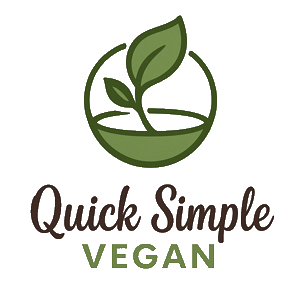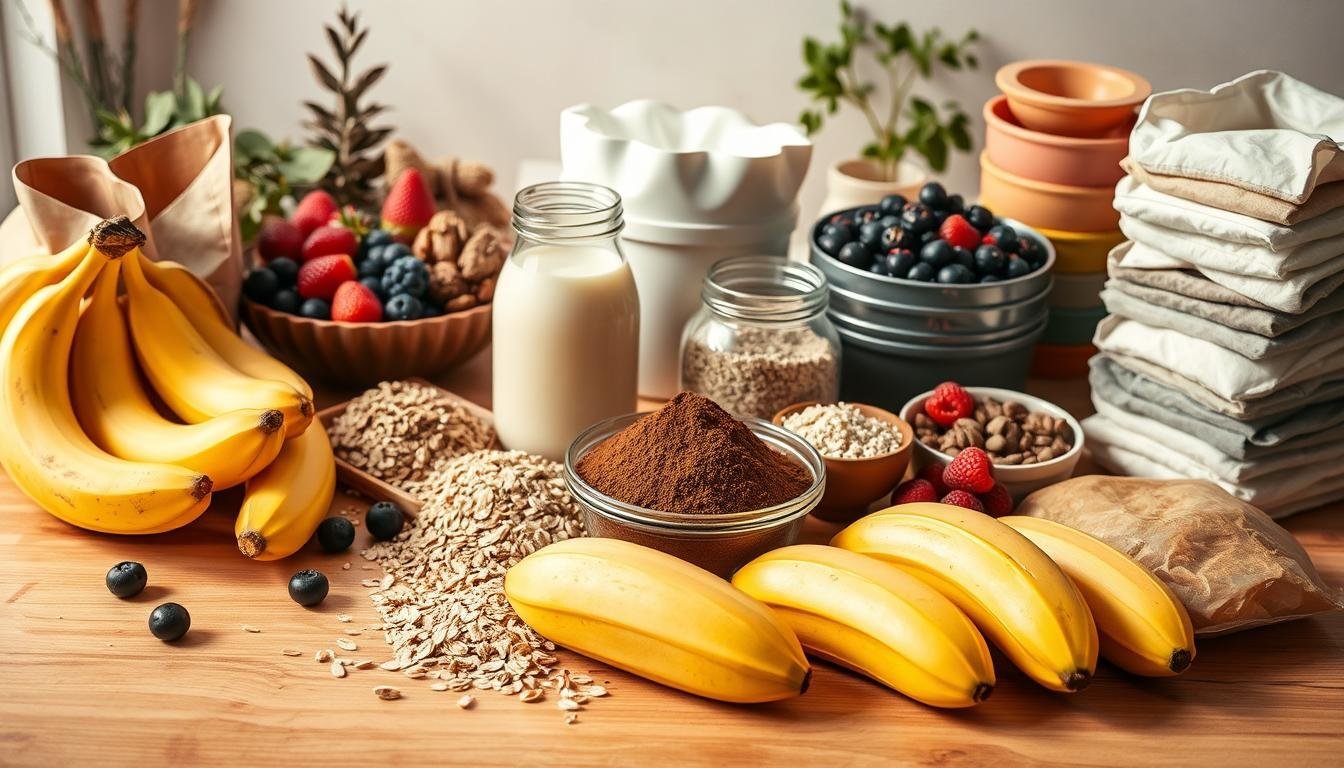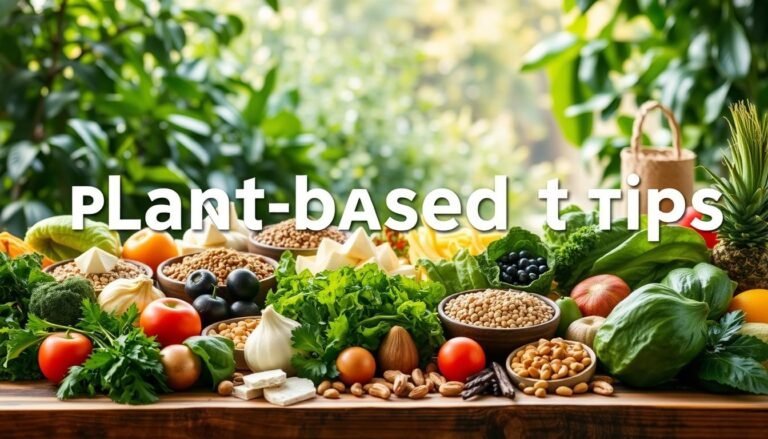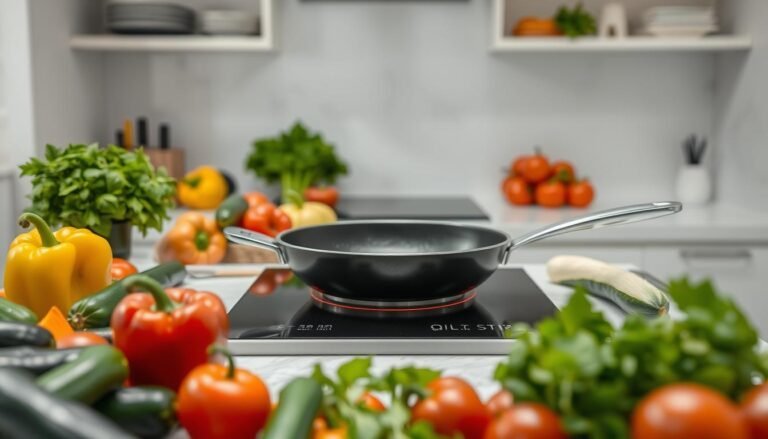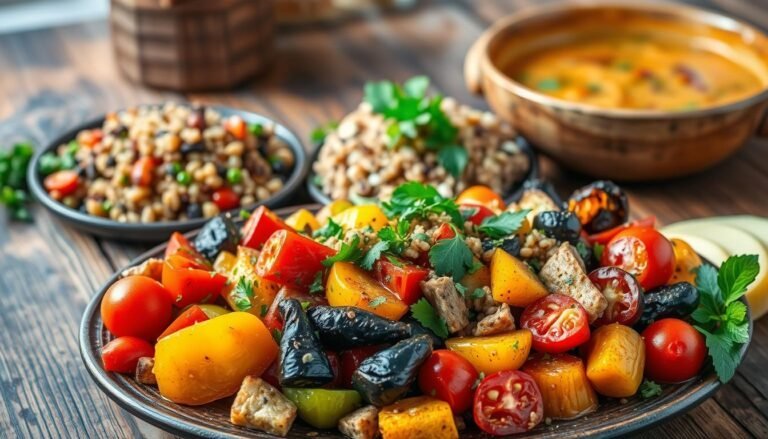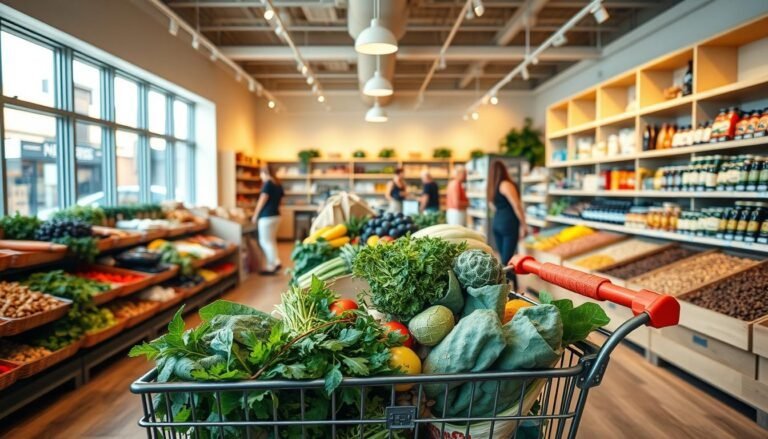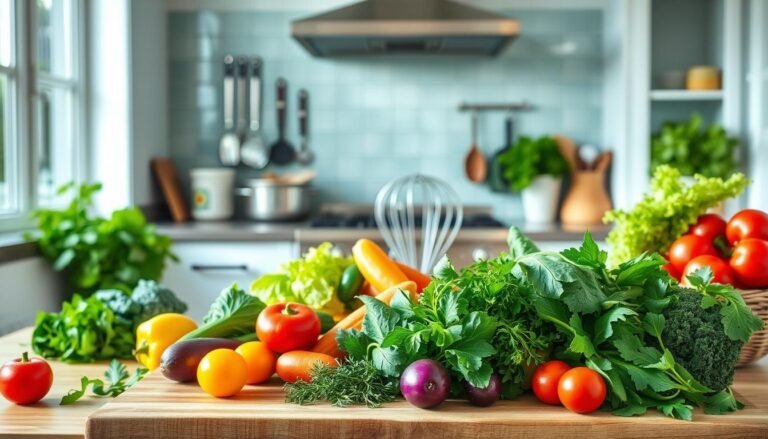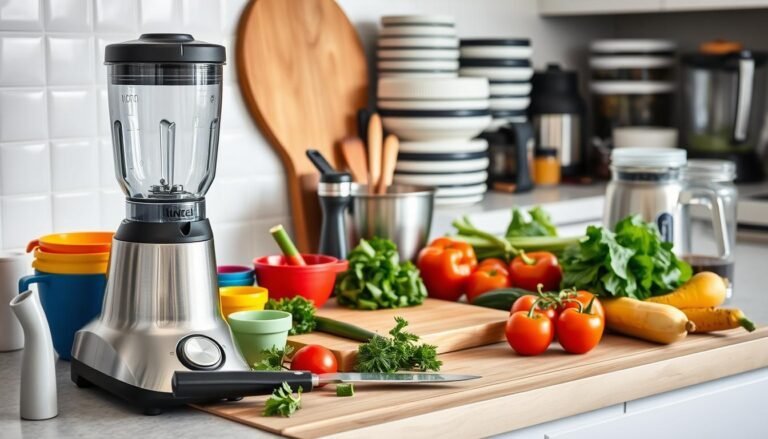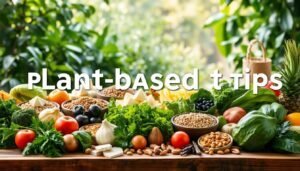Disclosure: This Post Contains Affiliate Links; We earn a commission on purchases.
Vegan baking is getting more popular. It’s a kind way to bake without harming animals. More people want to know how to bake vegan.
If you love baking or are new to it, learning vegan baking is key. This guide will teach you the basics. You’ll learn how to make tasty vegan treats for everyone.
This guide will show you how to replace eggs and dairy. You’ll learn how to mix plant-based ingredients well. You’ll become confident in baking amazing vegan treats.
Key Takeaways
- Understanding the basics of vegan baking substitutes
- Learning essential vegan baking techniques for beginners
- Discovering the best plant-based ingredients for baking
- Mastering the art of mixing and blending in vegan baking
- Exploring simple and delicious vegan baking recipes
Understanding the Fundamentals of Vegan Baking
Vegan baking uses plant-based ingredients and techniques. These are different from traditional baking. Knowing these differences is key for vegan baking success.
How Vegan Baking Differs from Traditional Methods
Vegan baking avoids animal products like eggs, dairy, and honey. Bakers look for alternatives to these products. Plant-based milk alternatives and vegan egg replacers are important in vegan baking.
The Science Behind Plant-Based Ingredients
Plant-based ingredients work due to their chemical and physical properties. For example, flaxseed meal can replace eggs because it turns gel-like when mixed with water. Knowing how these ingredients work helps bakers choose the right ones. Starches, proteins, and fibers are key for texture and structure in vegan baked goods.
Essential Equipment for Successful Vegan Baking
The right tools are important for vegan baking. You’ll need a good blender or food processor for milks and egg replacers. A stand mixer helps with mixing, and precise measuring tools are vital for the right ingredient ratios. Silicone baking mats and non-stick pans prevent sticking and make release easy.
Plant-Based Substitutions for Traditional Baking Ingredients
Vegan baking uses clever plant-based substitutes for texture, flavor, and look. As vegan options grow, knowing these substitutes is key for all bakers.
Egg Replacements and Their Functions
Egg replacers are vital in vegan baking. They add leavening, moisture, and binding. Many options are available, each with its own benefits.
Flax and Chia Eggs
Flax and chia seeds make a gel when mixed with water. This gel acts like eggs in recipes. To make a flax egg, mix 1 tablespoon of ground flaxseed with 3 tablespoons of water and wait a few minutes for it to thicken.
Commercial Egg Replacers
Commercial egg replacers, like Ener-G Egg Replacer, are easy to use. They give consistent results in many recipes.
Fruit and Vegetable Purees
Fruit and vegetable purees, like applesauce or pumpkin puree, add moisture and bind ingredients. They’re great in muffins and cakes.
Aquafaba and Its Applications
Aquafaba, the liquid from canned chickpeas, can be whipped for meringues or used as an egg substitute. It’s a top choice for vegan bakers.
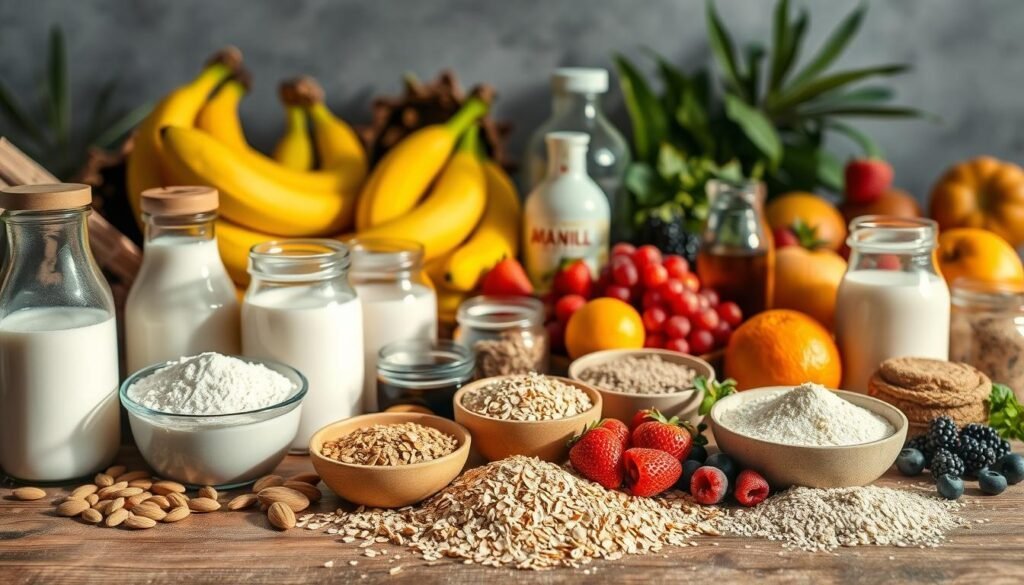
Dairy Alternatives for Baking
Dairy alternatives are key in vegan baking. They add creaminess, moisture, and flavor. Plant milks and non-dairy products help achieve the right results.
Plant Milks and Their Properties
Plant milks, such as almond, soy, and oat milk, have different tastes and textures. The right plant milk depends on the recipe and desired outcome.
Vegan Butters and Oils
Vegan butters and oils add flavor and moisture. They can be swapped in recipes based on consistency and taste needed.
Non-Dairy Yogurts and Creams
Non-dairy yogurts and creams add tangy flavor and creamy texture. They’re perfect for cakes, frostings, and desserts.
Coconut Products in Baking
Coconut products, like coconut milk and oil, add richness and flavor. They’re versatile in vegan baked goods.
Sweeteners and Binding Agents
Sweeteners and binding agents are vital in vegan baking. Natural sweeteners like maple syrup and coconut sugar add sweetness. Binding agents like arrowroot powder and tapioca flour help with texture.
Reading Labels: Identifying Hidden Animal Products
When buying vegan baking ingredients, always read labels. Look out for hidden animal products like gelatin, honey, and certain food colorings. Make sure the product fits your dietary needs.
Guide to Vegan Baking Techniques and Essentials
Vegan baking is more than just swapping out ingredients. It’s about mastering techniques and essentials. Learning these can make your baked goods truly stand out. Here are some key techniques for successful vegan baking.
Mastering Moisture Control in Vegan Recipes
Moisture control is key in vegan baking. It affects the texture and consistency of your baked goods. Using applesauce, mashed banana, or silken tofu can keep things moist. Also, adjusting liquid ratios and using vegan-friendly fats like coconut oil can improve texture.
- Use applesauce or mashed banana to add moisture.
- Adjust liquid ratios to achieve the right consistency.
- Incorporate vegan-friendly fats like coconut oil.
Achieving the Perfect Texture Without Eggs
Getting the right texture without eggs is a challenge. Eggs do many things in traditional baking. Vegan alternatives like flaxseed meal, chia seeds, and commercial egg replacers can help. Try different combinations to find what works best for you.
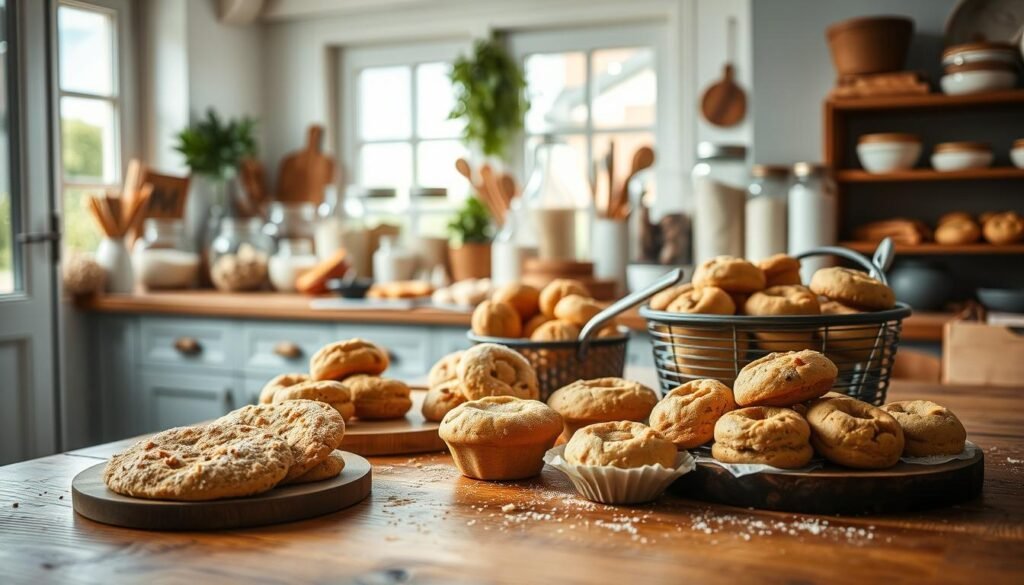
Proper Leavening in Plant-Based Baking
Leavening is essential for light and fluffy baked goods. In vegan baking, leavening comes from baking soda, baking powder, and natural yeast. The right mix and ratio of these agents is key for a good rise.
- Use baking soda and baking powder for chemical leavening.
- Incorporate natural yeast for a slower, more complex rise.
Temperature Considerations for Vegan Ingredients
Vegan ingredients react differently at different temperatures. For example, coconut oil solidifies at room temperature. Knowing this can help you adjust your recipes.
Tips for temperature control:
- Keep vegan butter and milk at room temperature.
- Chill coconut cream before whipping.
Flavor Enhancement Strategies
Enhancing flavors in vegan baking is all about quality. Use top-notch vanilla extract, spices, and citrus zest. Also, try different sugars and syrups for depth. Experimenting with flavors can lead to unique and tasty treats.
- Use high-quality vanilla extract.
- Experiment with spices and citrus zest.
- Try different sugars and syrups for varied flavors.
Vegan Baking Applications and Recipes
Vegan baking opens up a world of tasty recipes. You can make everything from rich desserts to special breads. It’s all about exploring and trying new things.
Perfecting Vegan Cookies and Brownies
Vegan cookies and brownies can taste amazing. The key is to pick the right egg substitutes and choose high-quality chocolate. Here are some great vegan cookie recipes:
- Chocolate chip cookies using applesauce as a moisture source
- Oatmeal raisin cookies with flaxseed as an egg substitute
- Peanut butter cookies that utilize mashed banana for added flavor

Creating Moist and Fluffy Cakes
Keeping cakes moist is important in vegan baking. Soy milk or almond milk helps keep them moist. Applesauce or silken tofu makes them fluffy. Here are some tips:
- Use a mix of sugar and non-refined sweeteners
- Add plant-based yogurts for extra moisture
- Don’t overmix the batter to avoid a dense cake
Mastering Vegan Bread and Pastries
For vegan bread and pastries, knowing your ingredients is key. The right flour and yeast make a big difference. Here are some tasty vegan bread recipes:
- Focaccia bread using olive oil and rosemary
- Croissants made with vegan butter and laminated dough
- Ciabatta bread that utilizes a natural starter
Specialty Items: Vegan Custards, Creams, and Frostings
Getting vegan custards, creams, and frostings right can be tricky. But with the right ingredients and techniques, they can be creamy and delicious. Here are some tips:
- Start with coconut cream or cashew cream
- Add cornstarch or tapioca starch for thickening
- Use vanilla or other extracts for flavor
Mastering these vegan baking skills lets you make a variety of tasty treats. These treats can satisfy many tastes and dietary needs.
Conclusion
Mastering vegan baking needs the right techniques, ingredients, and tools. Knowing the basics of vegan baking helps a lot. Using the right tools, like a food processor and digital scale, makes baking better.
For a better baking experience, check out Vegan Baking. It has lots of info on baking tools and techniques. Following this guide will help you become a great vegan baker.
Keep trying new ingredients and recipes as you bake more. Don’t be scared to try new things. With practice and patience, you’ll get better at making tasty vegan treats. This Guide to Vegan Baking Techniques and Essentials will be very helpful for you.
FAQ
What is vegan baking, and how does it differ from traditional baking?
What are some common egg replacers used in vegan baking?
How do I choose the right dairy alternative for my vegan baked goods?
What are some tips for achieving the right texture in vegan baked goods?
Can I use regular sugar in vegan baking?
How do I read labels to identify hidden animal products in baking ingredients?
What are some essential equipment for successful vegan baking?
Can I make vegan versions of traditional desserts like custards and creams?

Focused on simplicity and flavor, Ryan helps readers create quick vegan meals and snacks without the overwhelm. Whether you’re new to vegan cooking or just want to keep it simple, Ryan’s tips, guides, and no-fuss approach make plant-based eating accessible and enjoyable for everyone.
Subscribe to Our Newsletter
